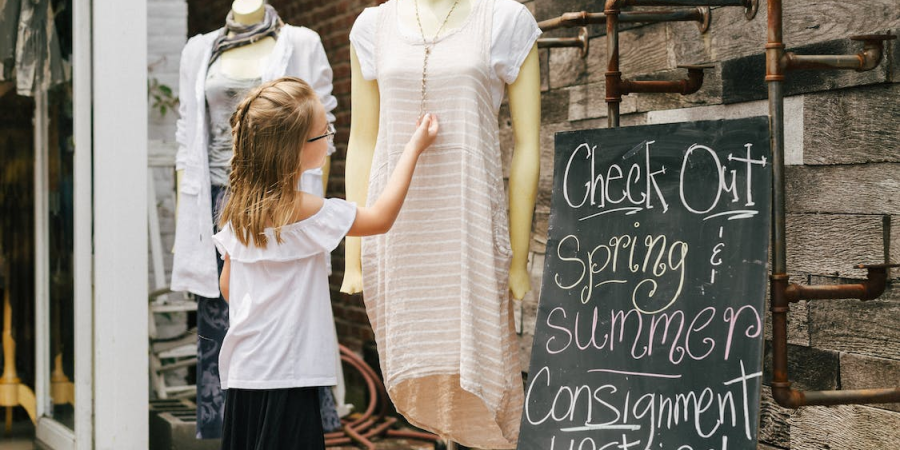Have you ever wondered about the optimal washing frequency for thrifted clothes? With the rise of sustainable fashion and the popularity of secondhand shopping, it’s essential to know how to care for these unique garments. Understanding how often to wash thrifted clothes can help preserve their quality, extend their lifespan, and reduce environmental impact.
In this article, we’ll delve into the topic of secondhand clothing maintenance and provide you with expert advice on caring for your thrifted finds. Whether you’re a seasoned thrifter or new to the world of pre-loved fashion, this guide will equip you with the knowledge to keep your secondhand garments looking their best.
The Factors to Consider
1. Fabric Type and Quality
When determining how often to wash thrifted clothes, the fabric type and quality play a significant role. Some fabrics, such as delicate silks or cashmeres, require more gentle care and infrequent washing to maintain their integrity. On the other hand, sturdier materials like denim or cotton can withstand more frequent washing.
To determine the appropriate washing frequency, always check the fabric care label on your thrifted garments. It provides valuable information on the recommended cleaning methods, including water temperature, washing machine settings, and whether handwashing is necessary.
2. Visible Stains and Odors
Another crucial factor in deciding when to wash thrifted clothes is the presence of visible stains or unpleasant odors. If you notice any noticeable marks or smells on your secondhand finds, it’s best to clean them promptly to prevent deep-seated stains from setting and odors from lingering.
Remember to use appropriate stain removal techniques based on the fabric type. Gentle spot treatments or pre-soaking can effectively tackle stains without subjecting the entire garment to a wash.
3. Frequency of Wear
How many times should you wear an item of clothing before washing it? When it comes to thrifted clothes, the frequency of wear plays a role in determining the washing schedule. If you’ve worn a garment for only a few hours or in a clean environment, it may not require immediate washing.
However, items like underwear, socks, or activewear usually need more frequent washing due to their direct contact with the body and higher potential for sweat and odor absorption. Assess the condition and cleanliness of your thrifted garments after each wear, and use your judgment to decide if they need washing.
The Golden Rule of Washing Frequency
Finding the Balance: How Often Should You Wash Thrifted Clothes?
Now that we’ve explored the factors influencing washing frequency, you may wonder what the golden rule is for thrifted clothes. While there’s no one-size-fits-all answer, a general guideline is to wash thrifted clothes when necessary, but not excessively.
Over-washing can cause unnecessary wear and tear on the fabric, fade colors, and contribute to faster deterioration. However, under-washing can lead to the buildup of dirt, oils, and bacteria, compromising hygiene and freshness.
To strike the right balance, follow these practical tips:
- Sniff Test: If your thrifted garment doesn’t have visible stains or odors, perform the sniff test. If it smells fresh and clean, it can likely be worn again without washing.
- Spot Cleaning: For minor stains or localized dirt, spot cleaning is often sufficient. Use a mild detergent or stain remover and gently dab the affected area to remove the stain or dirt.
- Air It Out: If your thrifted clothing item doesn’t require immediate washing, hang it in a well-ventilated area to air out. This practice can help eliminate odors and refresh the garment.
- Rotate Your Wardrobe: By rotating your wardrobe and not wearing the same thrifted clothes consecutively, you can allow time for natural airing and reduce the need for frequent washing.
- Follow Fabric Care Labels: Always adhere to the instructions on the fabric care labels. They provide valuable guidance on washing methods, drying instructions, and ironing recommendations.
Remember, every thrifted garment is unique, and the optimal washing frequency may vary depending on factors such as fabric type, quality, and your personal comfort level.
Conclusion
Unlock the Secrets of Secondhand Clothing Maintenance
Thrifting is not only a sustainable way to shop but also an exciting journey filled with unique finds. By understanding how often to wash thrifted clothes and implementing proper garment care, you can extend the lifespan of your secondhand treasures and contribute to a more sustainable fashion industry.
Consider the fabric type, visible stains, and frequency of wear when deciding whether to wash your thrifted garments. Strike a balance between cleanliness and preserving the garment’s quality by following practical tips like the sniff test, spot cleaning, and rotating your wardrobe.
Next time you embark on a thrift shopping adventure, remember these guidelines to ensure your secondhand clothing remains fresh, stylish, and eco-friendly. Join the growing community of conscious consumers who celebrate the beauty of pre-loved fashion while minimizing their environmental impact.
